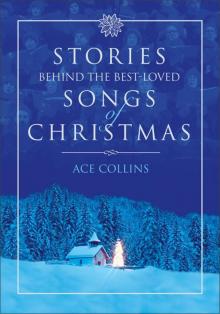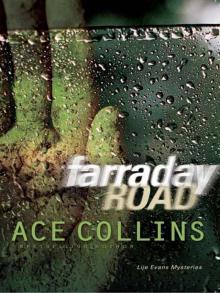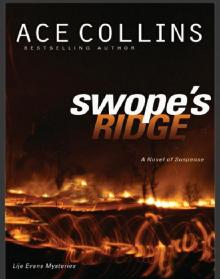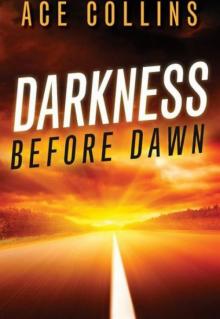- Home
- Ace Collins
Stories Behind the Best-Loved Songs of Christmas Page 2
Stories Behind the Best-Loved Songs of Christmas Read online
Page 2
Because the first published versions of the song used French for the verses, many have naturally assumed that its writer was a priest from France. Yet there is evidence that at least part of this great Christmas hymn was sung before Christianity took deep root in western Europe. A portion of the carol was used in early Christian church services even before the Roman Empire adopted Christianity as the state religion.
“Angels We Have Heard on High” was first published in 1855 in the French songbook Nouveau recueil de cantiques, and records indicate that the song had been used in church masses for more than fifty years before that publication. During those five decades the lyrics were coupled with the melody that is still used today. Except for the verses translated into languages other than French, today the song is sung just as it was a hundred and fifty years ago. Yet for maybe a thousand years or more before that, monks probably sang this same song as they celebrated the birth of the Savior. The story may well be as old as the church itself.
The song’s four verses embrace the angels’ visit to the lowly shepherds and the shepherds’ response. For many biblical scholars, the angels coming to men who worked menial jobs in the fields and informing them of the birth of the Son of God symbolizes that Christ came for all people, rich or poor, humble or powerful. The angels’ words in Luke 2, “Fear not: for, behold, I bring you good tidings of great joy, which shall be to all people,” paired with Jesus’ own parables concerning shepherds and their flocks, symbolizes that it would be the common man and not kings or religious leaders who would first carry the story of Jesus’ life to the masses.
But while the shepherds’ story of why they came to see the babe in the manger is easily identified in all the stanzas, for many who sing this old song, the chorus is an enigma. “Gloria in excelsis Deo” means, in English, “Glory to God in the highest,” a phrase that played an important part of worship at church masses dating back to 130 A.D. During that period, Pope Telesphorus issued a decree that on the day of the Lord’s birth all churches should have special evening services. He also ordered that, at these masses, after the reading of certain Scripture or the conclusion of specific prayers, the congregation should always sing the words “Gloria in excelsis Deo.” Historical church documents reveal that monks carried this executive order throughout the land and that by the third century it was a practice used by most churches at Christmas services.
It can be argued that if the chorus was written within a hundred years of Christ’s birth, the roots of “Angels We Have Heard on High” might go back to someone who actually knew Jesus when he walked on earth. Though unproved, it is a very interesting and inspiring idea and ties in to the selfless image of a called member of the clergy bringing faith alive in order to spread the message of Jesus Christ’s birth, life, and death.
Angels we have heard on high,
Sweetly singing o’er the plains,
And the mountains, in reply,
Echoing their joyous strains.
Chorus:
Gloria in excelsis Deo,
Gloria in excelsis Deo.
Shepherds, why this jubilee?
Why your joyous strains prolong?
Say what may the tidings be,
Which inspire your heav’nly song?
Chorus
Come to Bethlehem and see
Him whose birth the angels sing;
Come, adore on bended knee
Christ the Lord, the newborn King.
Chorus
See within a manger laid,
Jesus, Lord of heav’n and earth!
Mary, Joseph, lend your aid,
With us sing our Savior’s birth.
Chorus
Another facet of this carol that would seem to tie at least its chorus to the very early Catholic church is the range of notes found in the chorus. While most modern carols move up and down and cover at least an octave and a half, thus testing the upper or lower limits of the average singer, the phrase “Gloria in excelsis Deo” barely moves at all. In addition, the melody used by the song never strays more than one octave and the verse moves through only six notes. This simplicity seems to tie the melody to early chants used by monks and taught to their congregations.
Webster defines a chant as “singing or speaking in a monotone to a hymnlike repetitive melody.” Using this approach, important elements of worship were passed on from person to person and generation to generation in the oral tradition. In a day when few read words—much less music—chants helped keep the gospel alive among the common people. Of all the carols born in the chanting tradition, “Angels We Have Heard on High,’ was one of the easiest and least challenging, despite the fact that the word “gloria” covers three measures and hits almost twenty different notes. Unlike others, which failed to inspire as they taught, this song lifted hearts while telling the story. It embraced the spirit that a called man of God would have felt as he gave up everything to serve his Lord.
So why has this carol of unknown origin remained so popular for so long? Though the tune may be considered monotonous, when the simple text is read it becomes obvious that few Christmas songs so fully describe the joy that the world felt when a Savior was born in Bethlehem. The lyrics don’t just ask the singer to lift up his or her eyes and heart in wonder and observe the beauty of what God has given the world, they demand it. There can be no doubt that whoever wrote “Angels We Have Heard on High” not only believed the words found in the Bible, but relished that belief.
Ultimately, it is the sensitive retelling of the angel-shepherd story that carries this song and has made it one of the world’s most popular Christmas carols. As Kenneth W. Osbeck wrote in his devotional book, Amazing Grace, “The Bible teaches that angels are the ministering servants of God and that they are continually being sent to help and protect us, the heirs of salvation.” “Angels We Have Heard on High” speaks of the incredible, special relationship between heaven and earth, God and man, like few songs ever have. It embraces one of the most important elements of faith just as the shepherds embraced the Good News they were given two thousand years ago.
The mystery of who wrote this song points back to the lives of all those who are called to spread the gospel, to keep the story alive, to provide a means for people everywhere to hear and know the message that came to earth on that first Christmas. One of those nameless servants wrote this song to share the story with others. Though he has long been forgotten, what he believed is alive in not only his song but in hundreds of millions of souls around the world. His prayer has been answered: the angels are still heard, the Savior still welcomed, and the soul still stirred.
3
AWAY IN A MANGER
Many Christmas carols are bathed in so many different legends that separating fact from legend becomes almost impossible. Such is the case with the beautiful and simple carol that tells the story of baby Jesus lying in a manger that first Christmas night.
Along with “Jesus Loves Me,” “Away in a Manger” is one of the first songs that Christians teach children in Sunday school or church. With only three short verses and a very simple tune, it is no small wonder that little ones learn it long before they can read. The beautiful and serene picture painted in the carol’s lyrics defines “peace on Earth” better than most books or sermons.
In 1887, American hymn writer James R. Murray entitled the tune to “Away in a Manger” as “Luther’s Cradle Hymn.” Murray further stated in his popular songbook, Dainty Songs for Little Lads and Lasses, that Martin Luther had not only written “Away in a Manger,” but had sung it to his children each night before bed. As the song spread across a growing America and people began to sing it at home, in churches, and at schools, they often envisioned legions of German mothers rocking their babies to sleep each night with the strains of “Away in a Manger.” As the song became more popular, some news reports even trumpeted the song’s Teutonic heritage and the powerful inspiration that obviously could come from only the great Luther himself.
Ironical
ly, not only did German mothers of this era not sing “Away in a Manger,” they had never heard it until the song arrived in Europe from its country of origin, the United States. Where Murray got his misinformation on Luther remains a mystery, yet because of his outstanding reputation as a writer and publisher, the story stuck.
James R. Murray studied at the Musical Institute in North Reading, Massachusetts, under legendary teachers such as Lowell Mason, George Root, William Bradbury, and George Webb. His teachers marked their student as one of the finest young musical minds they had ever encountered. Yet Murray didn’t stay the course in school. In 1862, in the midst of the American Civil War, Murray enlisted as an Army musician. During the darkest days of the war he wrote his first song, “Daisy Deane.” Composed in a Virginia camp in 1863, the now forgotten ditty established Murray as a songwriter.
After the war ended and armed with a wealth of new material, Murray joined the Root and Cady publishing house in Chicago, Illinois, as editor of the Song Messenger. In 1881, Murray moved to Cincinnati, Ohio, to work for the John Church Company, editing the Musical Visitor. He also took charge of the company’s publishing department. It was there that he happened upon “Away in a Manger.”
Two years before Murray had printed “Away in a Manger” in his children’s songbook, the General Council of the Evangelical Lutheran Church in North America had published the song in their book Little Children’s Book: For School and Families. Printed in Philadelphia, Little Children’s Book listed no songwriter for the words to the song. The book stated that the tune—a much different one than that used by Murray—had been provided by J. E. Clark.
In truth, the first two verses of “Away in a Manger” were no doubt written by an anonymous American sometime in the mid–1800s. The song was probably passed down orally for years before it was picked up by the Lutheran editor. By the time it was first published, no one knew the identity of the composer.
In 1892, a man named Charles Hutchinson Gabriel became the music director of Chicago’s Grace Methodist Episcopal Church. A poet, composer, and editor, it was in the Windy City that Gabriel wrote a legion of hymns—eventually more than seven hundred. The composer’s work included such standards as “Way of the Cross,” “My Savior’s Love,” “Higher Ground,” and “I Stand Amazed in the Presence.” It was while he was at Grace Church that Gabriel discovered not only the versions of “Away in a Manger” published by the Lutheran press and by James R. Murray, but also another, unknown version that contained a third verse. He published this new edition of the carol in Gabriel’s Vineyard Songs.
Throughout the next two decades the popularity of “Away in a Manger” grew, as did the myth surrounding Luther’s authorship of the piece. Illustrations were drawn and stories were told depicting Luther singing the song to German children. As the real author never came forward to dispute the growing legend, the facts of the carol’s origination became more and more diluted.
Away in a manger, no crib for a bed,
The little Lord Jesus laid down His sweet head;
The stars in the sky looked down where He lay,
The little Lord Jesus, asleep on the hay.
The cattle are lowing, the Baby awakes,
But little Lord Jesus, no crying He makes;
I love Thee, Lord Jesus! look down from the sky,
And stay by my cradle till morning is nigh.
Be near me, Lord Jesus, I ask Thee to stay
Close by me forever, and love me, I pray;
Bless all the dear children in Thy tender care,
And fit us for heaven, to live with Thee there.
During World War I, while Germany battled the United States, many groups began to sing the words to “Away in a Manger” with the old Scottish tune “Flow Gently Sweet Afton.” This rendition might well have been a protest against any and all things German. Yet soon after the war, when most Americans had again embraced the original tune, a new songbook, Words and Song, gave a man named Carl Mueller credit as the musical composer of the song. Where the Boston publisher came up with Mueller’s name is another unanswered question. Carl Mueller did not write the music to “Away in a Manger”; in fact, many believe that he didn’t even exist.
In 1945, as Americans again battled Germany in a world war, American writer Richard S. Hill sorted through the now seventy-year-old mystery concerning the carol’s origin. He determined that James R. Murray himself probably wrote the music long coupled with “Away in a Manger.” Yet as Murray always took credit when he composed a song, it is doubtful that he would have deflected the credit to Martin Luther. It’s more likely that Murray was given the song and simply adapted the existing German-influenced melody into four-part harmony for his book. It also seems likely that Murray received the story of Martin Luther writing the piece from the person who originally gave him the song.
Whoever he or she is, the unknown songwriter probably didn’t live to see the song reach children the world over with its poignant message. Yet while the mystery of origination remains, the song’s message, depicting the precious moment when a Savior came to Earth bringing peace, joy, and hope, is so strong and profound that it leaped from a single night, from a single household, to become one of the world’s most beautiful Christmas messages in song. The picture that story paints is even more profound and riveting than that of Luther singing “Away in a Manger” in Deutsch to his children.
4
THE CHRISTMAS SONG
One of the most famous modern-day Christmas songs was written on one of the hottest California days on record. The song, which resulted from a collaboration between two of America’s best singer-songwriters, has touched millions and made both men a fixture of every holiday season. In fact, for many, Nat King Cole singing “chestnuts roasting on an open fire”—the opening line of “The Christmas Song”—is one of the greatest moments in the history of music. Yet had it not been for a friend of Cole’s named Mel Torme, who happened to drop by Cole’s house with the song, Cole would never have had the chance to record it.
Most baby boomers came to know Mel Torme from his appearances on the television series Night Court. Because of the show, “The Velvet Fog”—as he was called by fans—was seen as little more than an old, almost forgotten jazz singer. Torme relished playing up this false image of being a lounge lizard, though nothing could have been farther from the truth. Actually, Torme—a talented singer, songwriter, performer, and author—was one of the most ambitious men ever to walk onto a stage. His incredible catalog of credits continues to inspire people even after his death.
Torme grew up in show business. In the 1930s he was a child radio actor and vaudeville performer. By his teens he was already writing songs. When he was just sixteen, he quit high school to arrange music and play drums for the Marx Orchestra. Soon after, he worked with Frank Sinatra.
In 1944, Torme got together with two other talented musicians, Les Baxter and Henry Mancini, to form the vocal group the Mcl-Toncs. The trio was among the first of the jazz-influenced vocal groups. Five years later, Mel scored a solo number one hit with “Careless Hands” and quickly gained recognition as one of the top jazz artists in the world. Ethel Waters once said that Torme was “the only white man who sings with the soul of a black man.” Soon, without realizing it, Mel—whose views of life and music were never complicated by racial prejudice—would serve as the key in opening a holiday door previously closed to African Americans.
Over the course of the next fifty years, Torme influenced generations of singers, sold millions of records, acted in dozens of movies and television shows, wrote a couple of best-selling books, arranged music for some of the greatest names in the business, and took a few years off to fly airplanes as a commercial pilot. Yet the one facet of his career that is often overlooked was his ability to write music. If the singer-songwriter hadn’t decided to visit his friend Nat King Cole’s house one hot summer day, “Born to Be Blue” would have probably gone down as his most remembered composition. But a July drive acr
oss Los Angeles changed all that forever.
Robert Wells, a lyricist, was one of Torme’s best friends. They had written together for several years and had just been hired to produce the title songs for two movies, Abie’s Irish Rose and Magic Town. When Mel arrived, rather than working on the assignments, he found Wells trying to drive off the California heat with fans and positive thinking. The fans were doing little good, and the positive thoughts—which consisted of writing down everything that reminded Wells of cold winters in New England—were only making Wells warmer. Many years later, Torme recalled what happened.
“I saw a spiral pad on his piano with four lines written in pencil. They started, ‘Chestnuts roasting…Jack Frost nipping…Yuletide carols…Folks dressed up like Eskimos.’ Bob didn’t think he was writing a song lyric. He said he thought if he could immerse himself in winter he could cool off.”

 Stories Behind the Best-Loved Songs of Christmas
Stories Behind the Best-Loved Songs of Christmas Farraday Road
Farraday Road Yellow Packard
Yellow Packard Swope's Ridge
Swope's Ridge Darkness Before Dawn
Darkness Before Dawn